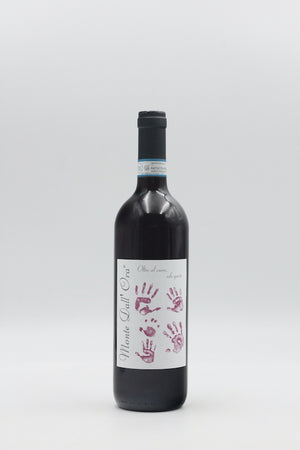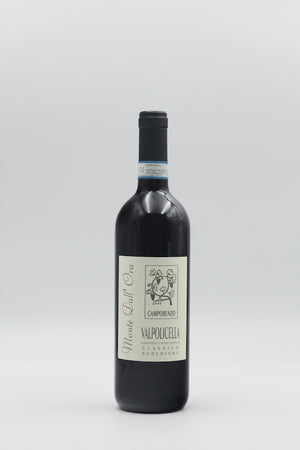- Home
- The Wines of Monte Dall'Ora
- Monte Dall'ora: Valpolicella Ripasso Classico Superiore Saustò 2018


Monte Dall'ora: Valpolicella Ripasso Classico Superiore Saustò 2018
- €29,90
The grapes for the Ripasso Saustò grow on the ridge of a hill above Castelrotto that stretches from south to east. The soils here are limestone-dominated and the grape varieties are typical of the area: Corvina sets the tone, complemented by Corvinone, Rondinella, Molinara and Oseleta. The harvest usually takes place in the last days of September, so not too late. The grapes are then fermented in the traditional way and the resulting wine, which tends to be light and high in acidity, is stored in cement or steel for four months.
What happens afterwards is unusual and, as far as we know, is only done in the production of Ripasso in Valpolicella. This is because the wine is now fermented a second time on the sugar-rich marc of the Recioto - the traditional red sweet wine in Valpolicella. This results in a natural concentration of flavours and the body also becomes fuller and more substantial. Thanks to this technique, a bridge is built between the usually light and fruity Valpolicella and the often powerful and intense Amarone.
Monte dall'Ora's Ripasso Saustò then disappears into large wooden barrels for a few months before being bottled unfined and unfiltered for a good year to find its balance.
The Saustó smells of ripe plums and cherries, herbs and sweet spices. It is intense, full-bodied and has a lot of power but also the right structure to concentrate it.
Data sheet
Grape variety: Corvina, Corvinone, Rondinella, Molinara
Vineyard: Sausto. Limestone-rich south-east exposure
Harvest: By hand
Fermentation: spontaneous | wild yeasts | ripasso. Fermented with Recioto marc
Ageing: over 6 months in large wooden barrels and matured for a further 9 months.
Filtration: no
SO₂: < 25 mg
Alcohol content: 14.5 % vol
Closure: Natural cork
Drinking temperature: 16-18 °C
Perfect drinking maturity: from now - 2035
Content and price per litre: 0.75 l/(€37.37/l)
Maxime: All winegrowers listed with Vinonudo work with compost, organic fertilisers and natural preparations in their vineyards and refrain from using herbicides, pesticides and artificial fertilisers.
Newsletter
Who knows more, tastes more. Once a week there is news about our wines, winegrowers and events.
© 2024 vinonudo | Shopify Theme by Mile High Themes | Powered by Shopify

